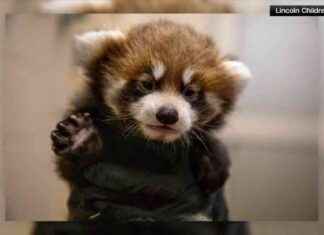Graphic novels and comics for young people and children continue unstoppable. More and more publishers are venturing to incorporate this reading offer into their catalogs, which lately has been loaded with female protagonists. Following in the footsteps of the strong empowerment of girls in Children’s and Young People’s Literature –which we have already talked about in these pages–, comics have also boosted their girls.
To all: witches, princesses, students, feminists, heroines and even cavemen. Works, many of them signed by new writers or from other disciplines who have entered the graphic novel with honors.
The veteran publishing house Edebé has been one of the last to join the graphic novel and it does so by betting on the Montreal-based French illustrator Sophie Escabasse, who has made her debut in the field of cartoon stories with The Witches of Brooklyn / Les bruixes Brooklyn (9-10 years).
Effie has lost her mother and Social Services take her to Brooklyn, where her elderly aunt Selimene lives with her partner Carlota. The trauma of loss and change will be more than compensated by the secret hidden by both old women, renowned healers, who do more than recommend natural remedies. And Effie realizes that she is one of them.
The Catalan illustrator and comic book artist Xavier Bonet has also chosen a witch to star in his new series Lily Medialuna / Lily Mitjalluna (Beascoa). The first installment, The Magic Gems (7-8 years), is an introductory story where the characters and their intentions are fixed: the awakening of the powers, the school of magic, the quarrels between students, the evil… Difficult not remember Harry Potter, although here what is pursued is the Moonstone, a rarity that protects Lily and her powers.
The Moon also reveals its effects in the crossover work of the Italian Greta Xella, La hija de la Luna (Liana Editorial), the author’s first long-form comic; a mixture of fantasy and reality crossed by a mysterious mental disorder that affects Nila’s mother, a young protagonist who must face her fears and herself in order to help her family, who mysteriously disappeared (10-11 years old). ).
And for disorders (this one more fun) that of Las metamorfosis de Selma / Les metamofosis de la Selma (6-7 years), by the duo Martin Baltscheit and Anne Bercher (Liana Editorial), in which a girl afraid of dogs will learn to love them by becoming one of them.
For the little ones, Bang Ediciones continues to delight with its My First Comic collection for children from 3 years old. Here we find the determined Ofelia, by Maxi Luchini, a caveman who takes up arms in ¡A comer! / Let’s eat! he makes it clear to her father (devout carnivore) with gestures and grunts that animals are her friends and that eating meat does not go with her.
If we stick to the name of the next protagonist’s school – Menestra de Verduras Primary School – meat should not be a saint of Violeta’s devotion either, by Émilie Clarke, another newcomer who publishes by the comics specialist Astiberri, and who takes advantage of little school misfortunes like wearing glasses for the first time or getting braces. The good thing about the case is that in this first installment, the glasses that Violeta has chosen not only solve her myopia problems.
By the way, we cannot fail to mention the saga with ecological overtones that starts this September in the same editorial, another of the great trends of the LIJ in recent years: Ultralazer, by Pauline Giraud, Maxence Henry and Yvan Duque, in which a magnificent planet whose king is a huge and curious animal, is invaded and is being devastated by invaders from space. A first book selected by the French foundation Lecteurs.com as one of the best books for children to understand the ecological emergency.
The illustrator Mirion Malle also uses all the resources of the comic to put together a powerful Manual for super feminists (SM) , which accompanied by an adult can well begin to be read in part from 6-7 years old. Perhaps we should not talk about the Bechel test, but it is never too early to talk about roles, personalities, abilities or desires.
Pedro Mañas, author of such popular series as Anna Kadabra or Las princesas Dragon, makes his comic debut alongside Laia Ferraté with the series Frida McMoon (Brugera). In this first installment (Los aprendices del tiempo / Els aprenents del temps) Mañas and Ferraté stage a particular Night at the Museum that will end with a trip to prehistory and the entry of a new heroine into the ranks of Madame Curie.
The terrible Adèle, by Mr Tan and Miss Prickly, continues to be the number one of the Kómi Kids publishing house, a little redhead whose witticisms and answers in the code of short comics sometimes remind us of Quino’s Mafalda.
From the Maeva Young graphic novel section, from which series as popular as The Babysitter Club have come out, comes Allergy, by Megan Wagner and Michelle Mee (9 years old), where a persevering Celia goes in search of the promised puppy on her tenth birthday, when she finds out the hard way that she is allergic to animals. And to finish, an immersion in the Fantastic Stories of Nothing (10 years), a magical world put together by Alejandra Green and Fanny Rodríguez (Harperkids) where its protagonist is constantly saved by powerful women.








